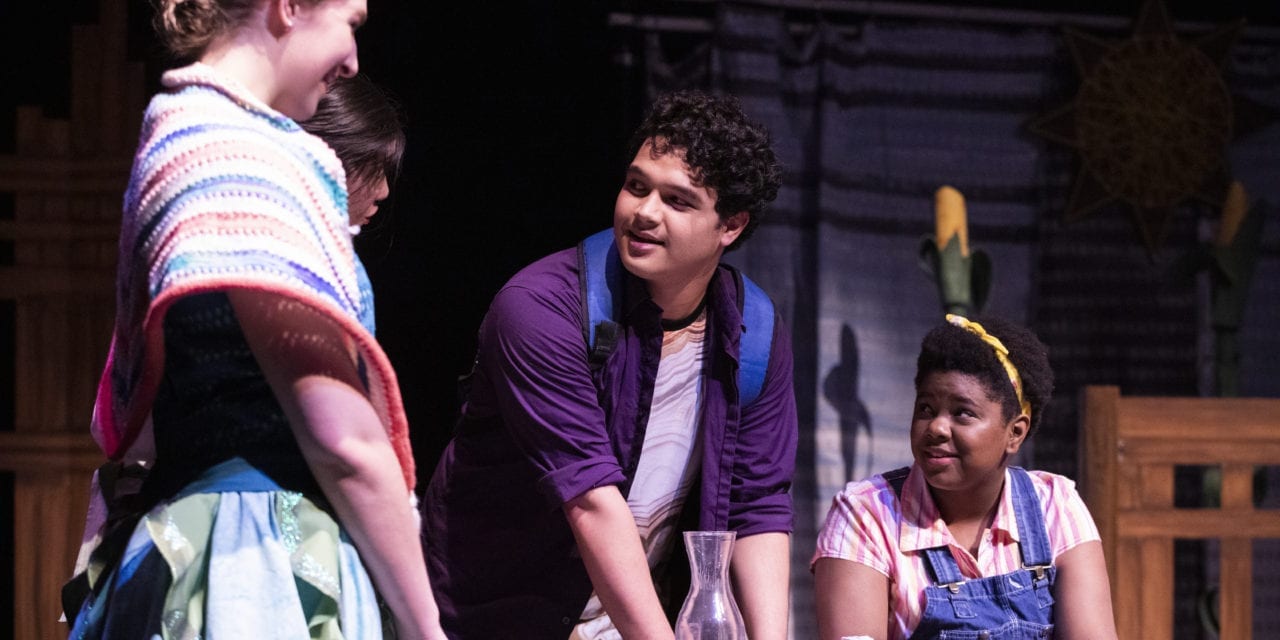OREM — “The show must go on.” That is the unofficial motto of the entertainment industry, but in the midst of the coronavirus pandemic, the goal of carrying on with a show has taken a backseat to saving lives. Throughout Utah, theatre productions have been cancelled or postponed, a trend that is seen nationwide. A select few productions are playing to reduced audiences. One show that has been impacted is Señora Tortuga, a production for young audiences playing at Utah Valley University. With the unfortunate luck of opening the day after Governor Herbert asked Utahns to cancel all gatherings of 100 or more people and to limit contact, Señora Tortuga will have a truncated run of three performances this weekend. Most of its tour in local schools has been cancelled, though there is hope that some performances can occur in May. The situation is a shame because the show provides a mix of fantasy and normalcy that provide a welcome escape during troubled times.

Show closes March 14, 2020. Remount closes October 23, 2021.
Written by Roxanne Schroeder-Arce, Señora Tortuga tells the story of a Hispanic family—Pedro, Claudia, and their parents—and the visits they receive from the mysterious title character. The father of the family (played by Will Ingram) is away, leaving the mother (played by Kat Balanzategui) to care for the children. It is not an easy job, and when Señora Tortuga arrives to tell the children fantastical stories, it disrupts the mother’s efforts. But the stories inspire Pedro to tell the truth, show love for his sister, and help his mother.
Jerdyn Akeripa is the most memorable actor in the cast of seven. His mannerisms and line delivery never waver from the actions and inflections of a ten-year-old boy. Whether he is tattling on his sister, trying to hide a chicken he stole, or arguing with his character’s mother, Akeripa is consistent in creating the illusion that he is much younger than he is in reality. As Claudia, Mariah White is a suitable foil and plays the cute little tagalong sister well. Together, the two create a vivid brother-sister relationship that many children would recognize in their own families. Their interactions are especially rewarding towards the end of the play, when Pedro demonstrates his affection for Claudia.

Jerdyn Akeripa as Pedro and Mariah White as Claudia. Photo by UVU Marketing.
Alice Elsworth plays the title character as a refined and genteel visitor who is a cross between Mary Poppins and El Gallo. Elsworth was burdened with long chunks of dialogue when she tells stories to Pedro and Claudia, but her commitment to making these tales have a movement and enjoyable pace prevented her from being bogged down in the language of the script. On the other hand, Balanzategui gave a monotonous performance as the mother; whether she was angry at Pedro for telling lies or bewildered by Señora Tortuga’s knowledge of the past, Balanzategui had the same level of energy and the same tone in her voice as she spoke.
Director Megan Ann Rasmussen is a master of mood. From the soothing opening notes of the Señora Tortuga song, to the homey kitchen scenes, to the hypnotic movement of the shimmering cloth that served as water, Rasmussen was able to create an inviting atmosphere throughout the show. I was also impressed by how she was able to change up the staging subtly in avoid repetitiveness, despite the episodic nature of the script. Rasmussen was aided in her efforts by a design team that has created the most visually appealing touring production for young audiences that I have seen in years. Stephen Purdy created a pleasing (and portable) multi-piece set that includes a wall with wooden slats of varying heights and a stylized double curtain that served as a daytime sky when closed and a night sky when open. Avery Ogle’s costumes were lovely (especially the layers for the title character), but also kept the show grounded in reality—especially Pedro’s modern jeans and shirt. And Randall McNair’s Aztec-inspired serpent puppet was a visual treat that made Pedro’s final dream seem special.

Kat Balanzategui as the mother and Alice Elsworth as Señora Tortuga. Photo by UVU Marketing.
The biggest weakness in this production is the script. Schroeder-Arce’s script goes through the sequence of family interaction, followed by a story from Señora Tortuga, and then a dream for Pedro in the night, followed by another family interaction that sets the cycle in motion again. After three times watching this, it feels too repetitive for adults to enjoy. Moreover, the twist at the end of the story (and the reason why Señora Tortuga knows about the mother’s past) is so unsubtle and obvious that it can’t be called foreshadowing. “Blatantly telegraphic” is a more appropriate term. It is also unclear how kids are supposed to learn the lessons that Pedro learns. Each time he hears a story, he is taught how to apply it in his life in a dream. Most children do not get such help from their subconscious. Still, Schroeder-Arce can write enjoyable dialogue; the code switching between English and Spanish in the characters’ speech is true to life, and Pedro’s and Claudia’s innocence and sweetness arise naturally from their language.
What I appreciate most from Señora Tortuga is how it speaks to human universals: the importance of family, the need for stories, and the struggle to find a path forward during hard times. That makes the show a wise choice to produce for young audience members. It is a shame that a virus will make this turtle crawl away before its time.
Update: Señora Tortuga will return to UVU on October 22 at 6:30 PM and October 23 at 11 AM and 2 PM. Tickets are $5. For more information, visit uvu.universitytickets.com

This review was supported by a generous grant from the Orem CARE program.





